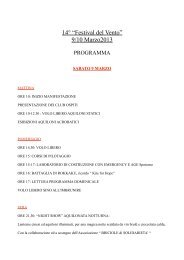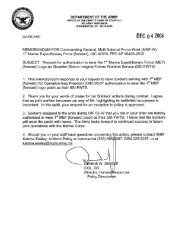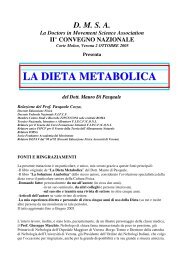Science vs. religion : what scientists really think - File PDF
Science vs. religion : what scientists really think - File PDF
Science vs. religion : what scientists really think - File PDF
Create successful ePaper yourself
Turn your PDF publications into a flip-book with our unique Google optimized e-Paper software.
What Scientists Are Doing Wrong That They Could Be Doing Right 133doing? Now we’ll hear from some who have ideas about <strong>what</strong> their colleaguescould do better to advance the cause of science among a religious public.WHAT SCIENTISTS COULD BE DOING RIGHTContrary to the predictions of some, <strong>religion</strong> does not seem to be going away. 14It has a tremendous ability to affect the public perception of science and issomething about which all <strong>scientists</strong> should develop nuanced views. We might<strong>think</strong> of the dialogue <strong>scientists</strong> enter into with the public about issues of <strong>religion</strong>as having distinct stages—not hierarchical stages, wherein all <strong>scientists</strong>ideally proceed from one to the next, but stages where <strong>scientists</strong> might chooseto enter and remain or to progress from one to the next, depending on theirown backgrounds and propensities. These stages of dialogue might be namedas follows:Recognizing religious diversity . This base stage would be for <strong>scientists</strong> torecognize that there is a diversity of religious traditions and that different traditionsintersect with science in distinct ways.Recognizing the limits of science . In this stage, <strong>scientists</strong> could develop a willingnessto discuss <strong>what</strong> science is and <strong>what</strong> it is not.Active engagement . The third stage—especially for <strong>scientists</strong> who arereligious—would be a willingness to talk publicly about the connectionsbetween their own faith and the work they do as <strong>scientists</strong>. This engagementwould provide models for religious members of the public who might beotherwise unwilling to trust and endorse.Recognizing Religious DiversityWhile elite <strong>scientists</strong> have a very elaborate vocabulary for the subjects they dealwith in their own particular fields and subfields, those without a religious identity(over 50 percent) have limited experience or limited ongoing interactionwith <strong>religion</strong> and religious people. (Thirteen percent of <strong>scientists</strong> were raisedwith no religious tradition, and those who were raised in a religious home oftensaw <strong>religion</strong> practiced only weakly.) The first stage of effectively engaging <strong>religion</strong>and science, then, is to recognize the diversity in religious thought andpractice. Just as not all biologists study the same biological system, not all religiouspeople have the same beliefs or apply their beliefs in the same way. Inaddition, academic <strong>scientists</strong> will have to broaden and deepen their ideas about
















